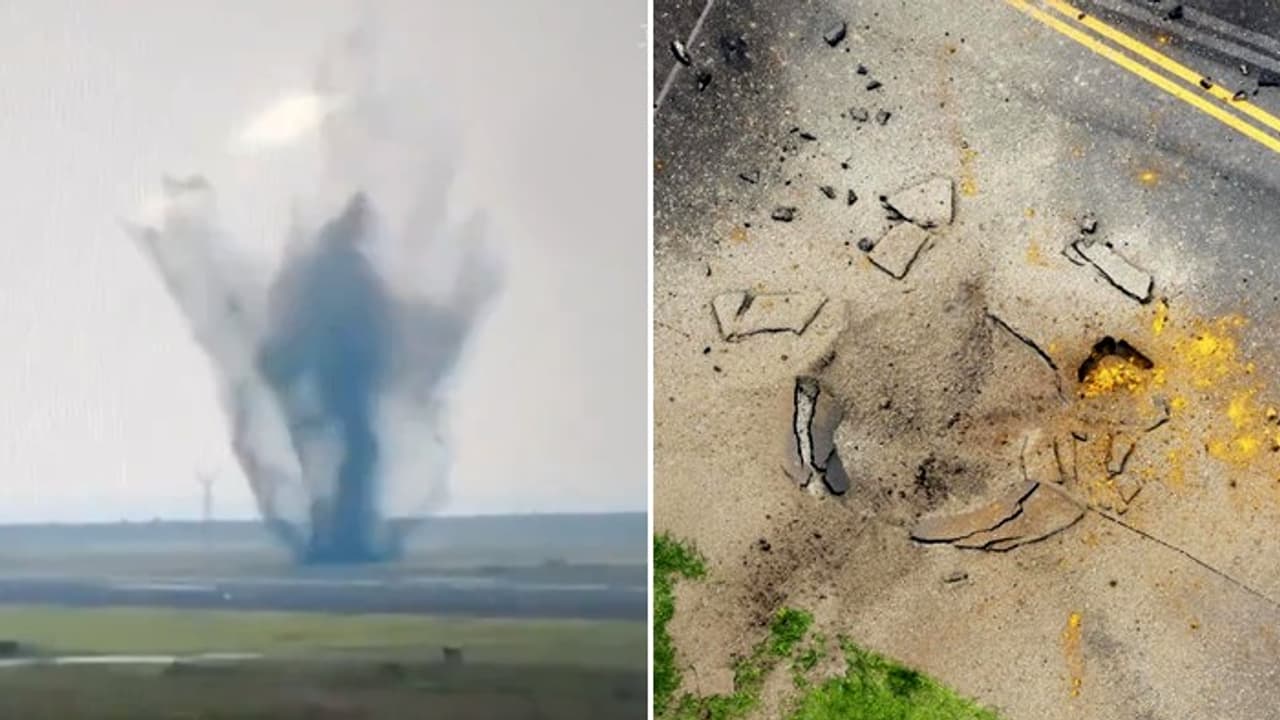Miyazaki Airport in Japan was rocked by a startling explosion on Wednesday when an American bomb, dating back to World War II, detonated near a runway, creating chaos and leading to the cancellation of more than 80 flights.
Miyazaki Airport in Japan was rocked by a startling explosion on Wednesday when an American bomb, dating back to World War II, detonated near a runway, creating chaos and leading to the cancellation of more than 80 flights. The blast left behind a large crater, highlighting the lingering threat posed by unexploded ordnance from the war.

The 500-pound bomb, believed to have been dropped during a World War II air raid aimed at neutralizing Japanese aircraft, had reportedly been buried beneath the surface for eight decades. It was part of a military drill by the US Air Force during the final stages of the war, designed to thwart "kamikaze" attacks. These suicide missions, carried out by Japanese pilots, were a desperate tactic used to counter the overwhelming advance of Allied forces.
The explosion at the airport, which is located in Miyazaki Prefecture on Japan’s southern island of Kyushu, left a crater approximately 7 metres (23 feet) wide and 1 metre (3 feet) deep. The Japan Ground Self-Defense Force confirmed that the bomb, unearthed accidentally, was likely from a past air raid. Fortunately, no one was injured in the blast, although it caused significant damage to the airport's taxiway.
The explosion prompted immediate action, with airport authorities cancelling over 80 flights on Wednesday, leaving thousands of passengers stranded. A video captured by an aviation school nearby showed the powerful blast, with debris and asphalt spewing into the air, resembling a fountain of destruction. As a safety measure, flights were suspended, and emergency services were mobilized to assess the damage and secure the area.
Japan’s Chief Cabinet Secretary, Yoshimasa Hayashi, confirmed the flight cancellations and reassured the public that the airport was working swiftly to repair the damage. By Thursday morning, repair work on the taxiway was completed, and normal operations resumed.
Historical legacy of Miyazaki airport
Miyazaki Airport has a deep-rooted connection to World War II, which makes this incident even more significant. Originally constructed in 1943 as an Imperial Japanese Navy flight training field, the airport was used for military operations, including suicide missions by kamikaze pilots. These pilots, seen as carrying out an honourable duty for their country, took off on missions designed to inflict maximum damage on enemy forces by crashing their planes into Allied ships and military targets.
In the years following World War II, unexploded bombs have been a recurring issue in Japan. Several have been discovered in and around military installations like Miyazaki Airport, where remnants of the US military's air raids lie hidden beneath the ground. Defence Ministry officials have confirmed that the area has been the site of multiple discoveries of unexploded ordnance left by American forces during the war.
What is a kamikaze bomber?
A kamikaze bomber is a term used to describe a Japanese military pilot who executed intentional suicide missions during World War II, particularly in the later stages of the conflict. The word "kamikaze" is derived from the Japanese terms "kami," meaning divine, and "kaze," meaning wind, which translates to "divine wind." These pilots would crash their aircraft, often packed with explosives, into enemy ships or military targets, sacrificing their lives to cause maximum destruction.
The kamikaze tactic was mainly utilized by the Japanese Imperial Navy and Air Force against Allied naval forces, especially during significant engagements like the Battle of Okinawa and other battles in the Pacific Theater. This strategy emerged as a desperate measure as Japan's military resources dwindled, aiming to hinder the advance of Allied forces.
Typically, kamikaze pilots were young men who perceived their missions as an honourable duty to protect their homeland. These attacks became emblematic of extreme sacrifice and determination in the face of inevitable defeat.
While the kamikaze strategy inflicted considerable damage on Allied warships throughout the war, it ultimately failed to alter the course of the conflict.
The explosion at Miyazaki Airport is part of a broader issue that Japan has faced for decades—unexploded ordnance left over from World War II. Despite widespread efforts to locate and safely dispose of these dangerous remnants, hundreds of tons of bombs are still buried across the country. Occasionally, these bombs are uncovered during construction work or, as in the case of Miyazaki Airport, in areas with a significant wartime history.
These discoveries continue to pose a threat to safety, as highlighted by Wednesday's explosion. The event serves as a reminder of the long-lasting impact of the war on Japan's infrastructure and the ongoing challenges the country faces in ensuring public safety.
As authorities continue to investigate the circumstances leading up to the bomb's discovery, questions remain about the potential for other unexploded ordnance in the vicinity of Miyazaki Airport. Defence Ministry officials have been tasked with evaluating whether further searches are necessary to prevent similar incidents in the future.
